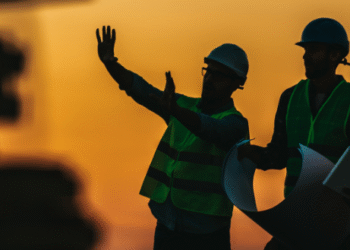3D printing in construction will allow innovation in materials and shapes once the technology becomes more widespread
In an industry ripe for disruption, 3D printing (3DP) is grabbing plenty of interest. Proven examples of 3DP have included the world’s largest building by area (6,900 square feet and 9.5 m tall), completed in Dubai, and the first liveable house built in Saudi Arabia in November 2018 – a first in the Middle East. Designed and built by CCC and Dutch 3D printing company CyBe, the 80m2, single-storey house was printed in just 36 hours and included direct MEP integration during the process.
Built on the outskirts of Riyadh as part of the National Housing and Industrial Development and Logistics Program, the project falls within the innovation pillar of the kingdom’s Vision 2030 plans for economic diversification by improving construction through disruptive technology. Overall, it was completed in just five days, and highlighted the potential of 3DP to create more affordable housing, helping countries meet demand from growing populations.
Complex shapes and novel materials
The promise of 3DP is that it allows for the use of new or novel materials, can cope with complex architectural shapes, has benefits around the speed of production and customisation at scale, can quickly produce repetitive elements, and reduces waste, so should improve the environmental sustainability of construction.
“Difficult shapes are now made possible through 3D printing technology; there are no more constraints, no matter how irregular it is,” said Ma Yihe, President and CEO, WinSun. It means that in future, architectural design will increasingly use shapes that would either be impossible to do using traditional methods or impractical due to cost, time or location.
Speaking during the Construction Technology Forum in Dubai, Prakash Senghani, then Director of Innovation and Digital Construction Middle East for Aecom, but now working for JLL, argued that a key value proposition with 3D printing comes from the use of innovative materials, rather than using 3DP technology to replicate what is already being done in the industry.
“We have focused on concrete because as an industry we are very comfortable with it – we know how it works and understand its properties. The real value will come with some of the exotic materials and material science in 3D printing, such as bio-based materials, and that is the next wave of 3D printing that will accelerate its adoption,” Senghani commented.
Sustainability goals
For an industry that runs on tight margins in the Middle East, the opportunity to not only build quicker and with less labour, but to also use new materials is attractive. It also increases the prospect of meeting sustainability goals, either by using more environmentally friendly materials or by embracing the circular economy and reusing waste materials such as plastic in the 3DP process.
There is also the option of using different materials in a multi-headed 3D printer, such as mixing polymers, metals and cement. This will increase the value proposition of 3DP because contractors can integrate circuits and pipes within the print, saving time on back-end work as they are printed and inserted in real-time.
The technology is already disrupting the construction industry and the various builds happening globally will increase in number and structural size. Architects will be able to rethink how they design infrastructure, particularly as complex shapes will no longer be cost- and time-prohibitive, and through new materials combinations, find ways of building that are smarter, lighter, less wasteful and require less construction.















